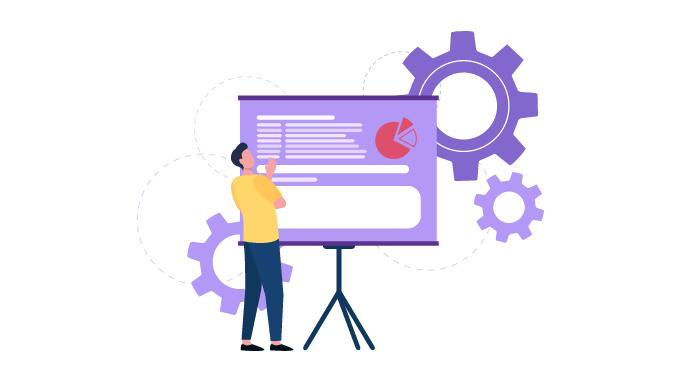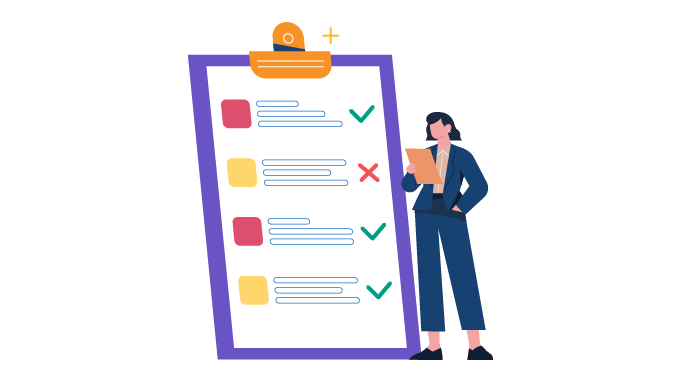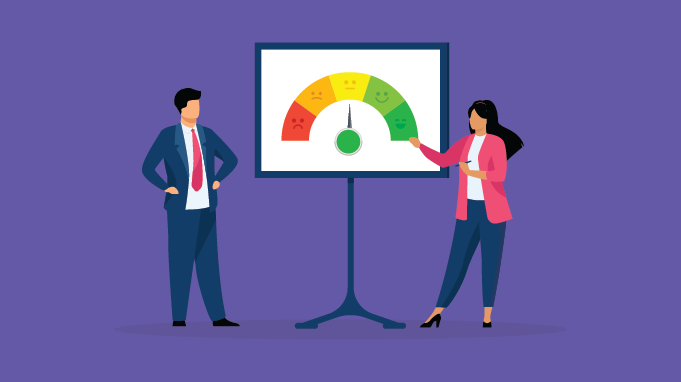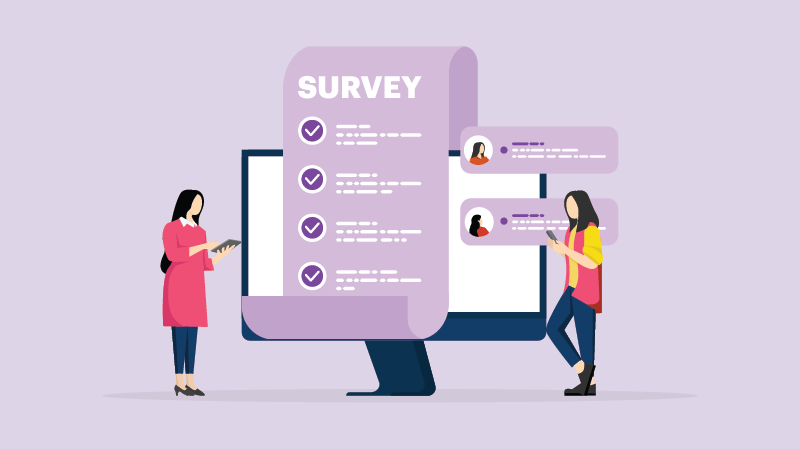Mastering Employee Lifecycle Surveys: A Guide with Questions
In today's competitive job market, attracting and retaining top talent is crucial for businesses to thrive. Employee lifecycle surveys provide a structured approach to understanding the evolving needs and challenges faced by employees throughout their tenure.
By actively seeking feedback at key junctures, organizations can address concerns and implement meaningful improvements to foster a positive work environment.
In this comprehensive blog, we will delve into the intricacies of employee lifecycle surveys and their significance in shaping a thriving organizational culture.
We will also explore the various types of surveys, their purposes, and the critical questions to ask at each stage of the employee lifecycle.
Key Takeaways
- What are Employee Lifecycle Surveys?
- Looking at the Benefits of Employee Lifecycle Surveys
- Understanding the Key Stages of Employee Lifecycle Surveys
- How to Conduct Employee Lifecycle Surveys?
What are Employee Lifecycle Surveys?

Employee Lifecycle Surveys are a strategic tool used by organizations to gather feedback from employees at various stages of their tenure in an organization.
These employee surveys help organizations understand and improve the employee experience from recruitment to exit. The goal is to collect insights that can enhance employee engagement, satisfaction, and retention.
Benefits of Employee Lifecycle Surveys

Improved Recruitment
Employee lifecycle surveys can help improve recruitment by identifying weaknesses in the hiring process. By gathering feedback from candidates and new hires, companies can streamline their recruitment efforts. This will enhance the candidate's experience and make you an attractive employer.
For instance, if survey data consistently highlights the importance of screening methods and employer branding, the organization can prioritize this aspect in its recruitment procedure.
Increased Engagement
Regular surveys demonstrate that the organization values employee feedback and actively seeks to improve the work environment. This fosters a sense of empowerment and inclusion among employees, leading to an increase in engagement levels.
When employees feel heard and valued, they are more likely to be committed and motivated to do to their work, resulting in higher productivity.
Enhanced Onboarding
Employee lifecycle surveys can pinpoint areas for improvement in the onboarding process by identifying pain points or areas where new hires may feel unsupported.
By collecting feedback from new employees early on, organizations can make necessary adjustments to the onboarding process to ensure a smoother transition.
For example, if survey responses indicate that new hires struggle to understand company policies and procedures, the organization can provide clearer documentation or training to address the issue.
Reduced Turnover
Employee surveys, particularly exit interviews, provide valuable insights into the reasons why employees leave an organization.
The surveys help organizations identify factors that contribute to employee dissatisfaction, so that they can take proactive measures to reduce the turnover rates.
For instance, a survey reveals that many employees leave due to a lack of career development opportunities. To address the issue, the organization can implement mentorship programs or training initiatives to support employees' professional growth.
Stronger Employer Brand
A study by LinkedIn found that companies with a strong employer brand can reduce their cost-per-hire by up to 50%.
Positive feedback from current employees captured through employee surveys can serve as powerful testimonials for prospective candidates.
It can build a strong employer brand known for its commitment to prioritizing employee satisfaction and well-being. This can attract top talent and differentiate the organization from its competitors.
Key Stages of Employee Lifecycle Surveys
1. Attraction

The attraction stage is crucial for building a strong employer brand and attracting top talent.
In this phase, attraction surveys help organizations understand which recruitment channels are most effective and the factors that influence candidates' decisions to apply.
The attraction surveys include questions that address various aspects of employee's application and recruitment experience. It may include questions such as:
- How did you first learn about our company?
- What attracted you to apply for a position with our company?
- What aspects of our company culture appeal to you the most?
- What channels did you find most effective in accessing information about job openings with our company?
- What do you believe sets us apart from other employers you've considered?
2. Recruitment
The recruitment stage is the first touchpoint with potential employees. A recruitment survey can help you understand the effectiveness of your recruitment process and identify areas for improvement.
The survey is conducted after each hiring cycle or periodically to gather feedback from both successful and unsuccessful candidates.
It typically includes questions about various aspects of the recruitment process, such as communication, job clarity, and interview experience.
Here are some of the questions that these surveys may include:
- How would you rate the overall application and interview process?
- Did the job description accurately reflect the role and responsibilities?
- How satisfied were you with the clarity and transparency of the application process?
- How would you rate the communication and responsiveness of our recruiting team?
- How would you rate your overall experience with the recruitment process at our company?
3. Onboarding

The onboarding phase is essential for creating a positive first impression and setting the right tone for new employees. Using an onboarding survey can help evaluate the effectiveness of your onboarding process and pinpoint areas that may need improvement.
Furthermore, these surveys can help you ensure that new employees feel welcomed, supported, and prepared in their roles.
The onboarding surveys are usually conducted after new hires complete their onboarding process, typically within the first 30-90 days.
The surveys may include questions such as:
- How would you rate the overall onboarding experience?
- How satisfied were you with the training programs and orientation sessions provided during your onboarding?
- How would you rate the accessibility and availability of HR and support staff during your onboarding?
- Were you provided with information about the company's policies, procedures, and benefits during your onboarding?
- Did you receive guidance on how to navigate our company's systems, tools, and technology platforms?
Recommended Read: 45 Employee Onboarding Survey Questions To Ask Your New Hires
4. Development

During the development phase, the emphasis is on fostering the growth and career progression of employees within the organization. This involves conducting regular performance surveys, either annually or periodically.
The employee performance surveys are conducted to get an overview of the employee's current skill level, performance, and potential for growth.
These reviews are a critical component of the employee development process, serving as a platform for feedback, recognition, and growth planning.
Let's take a look at some of the questions that are included in these surveys:
- How would you rate the quality and accuracy of your work?
- How well do you collaborate and communicate with your colleagues and team members?
- How would you rate your problem-solving and decision-making skills in your role?
- Do you feel that you have opportunities for growth and development in your current position?
- How well do you handle constructive feedback and incorporate it into your work?
5. Retention

Retention involves fostering a work environment that encourages employees to remain and develop.
A stay interview is a proactive approach by organizations to engage with their current employees in order to retain them. It enables them to understand the motivation behind employees who stay with the company.
The relationship between employee retention and stay interviews is closely intertwined. By proactively engaging with employees, organizations can identify potential retention risks and take preventive measures to address them.
Here are some of the questions included in stay interviews:
- How would you rate your overall job satisfaction?
- What aspects of your role do you find most fulfilling or rewarding?
- Do you feel that your contributions are valued and recognized by the company?
- How satisfied are you with your work-life balance in your current role?
- How do you feel about the level of recognition and feedback you receive for your contributions?
6. Offboarding

A study by Bamboo HR revealed that a solid onboarding process can improve employee retention by 82%.
Employee offboarding focuses on facilitating a seamless transition when an employee chooses to depart from the organization. This process may entail conducting exit interviews.
They serve as a crucial feedback mechanism to gather insights into employees' departures and overall experience with the company.
During the exit interview, the departing employee may be asked questions related to their reasons for leaving, their overall satisfaction with their role and the organization. Here are some of the questions that may be included:
- What were the primary reasons for your decision to leave our company?
- How would you rate your overall experience working for our organization?
- Would you consider returning to our company in the future? If not, why?
- What were the primary factors that influenced your decision to leave the company?
- How would you describe the company culture and work environment during your tenure?
How to Conduct Employee Lifecycle Surveys?

Let's explore the key steps to effectively conduct employee lifecycle surveys and unlock the full potential of your workforce:
1. Define Your Objectives
Before embarking on the survey process, clearly define your objectives. Are you aiming to assess onboarding experiences, gauge job satisfaction or identify potential retention risks? Establishing specific goals will help you craft targeted survey questions and ensure meaningful data collection.
2. Develop Insightful Questions
Crafting effective survey questions is crucial for obtaining valuable insights. Ensure that your questions are clear, unbiased, and relevant to your objectives. Consider a mix of multiple-choice, rating scale, and open-ended questions to capture both qualitative and quantitative data.
3. Choose the Right Survey Platform
Leverage user-friendly employee survey platforms like Vantage Pulse, CultureMonkey, and SurveyMonkey to ensure seamless data collection and efficient survey process. By investing in the right survey platform, you can empower your organization to cultivate a highly engaged and satisfied workforce.
Recommended Read: Top 20 Employee Pulse Survey Tools
4. Communicate and Build Trust
Transparency and communication are essential for successful employee surveys. Therefore, clearly explain the survey's purpose and address any concerns about confidentiality and anonymity.
5. Analyze and Act on the Data
Once the survey is complete, analyze the data thoroughly. Look for patterns, trends, and areas of concern or praise. Share the findings with the stakeholders and develop action plans to address the areas for improvement.
Conclusion
In conclusion, employee lifecycle surveys are invaluable tool for understanding and improving the employee experience at every stage. By actively seeking feedback at key stages of employee lifecycle you can enhance recruitment, increase engagement, reduce turnover, and foster a thriving company culture.
While the questions presented here can serve as a foundation, it's important to continuously refine and adjust surveys according to your changing requirements.


















